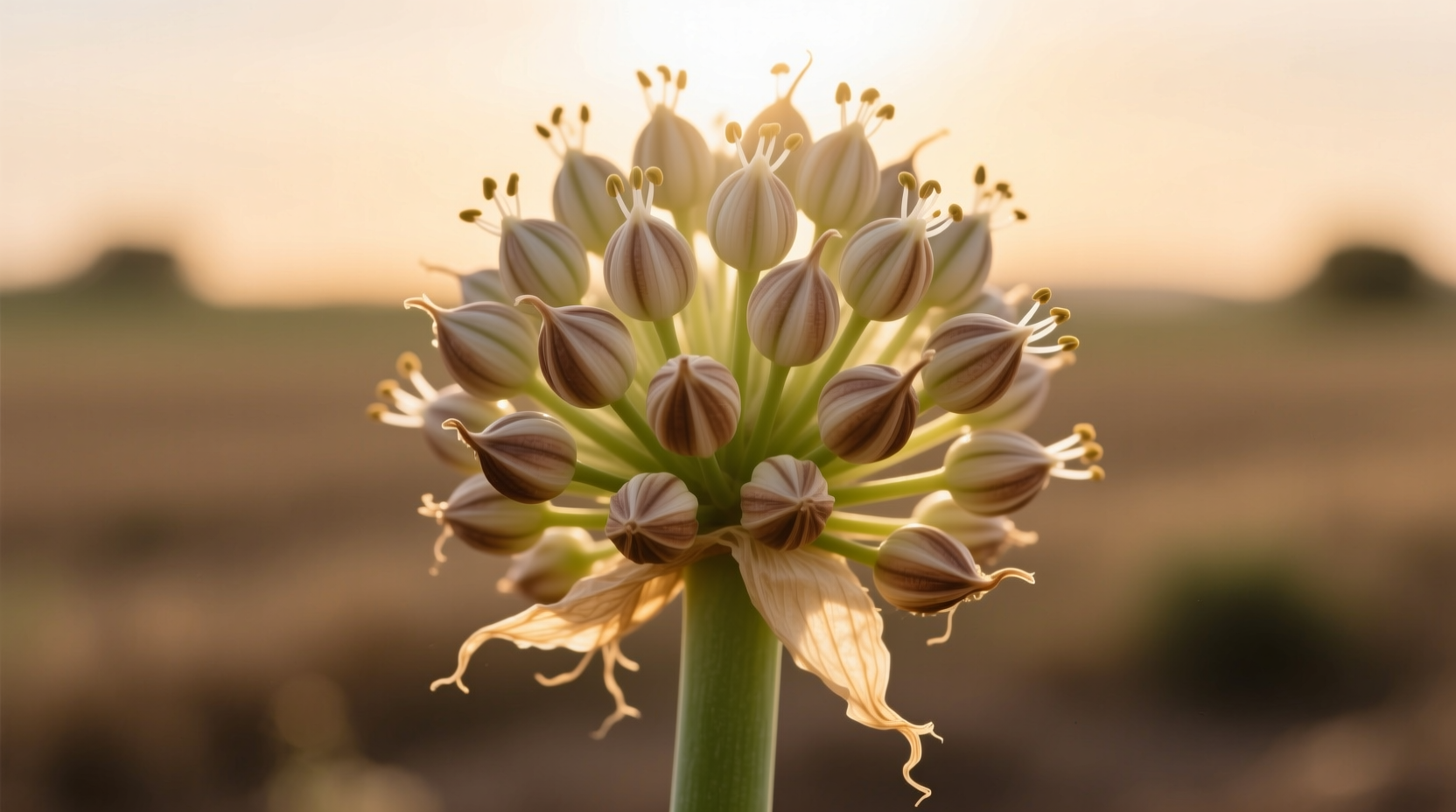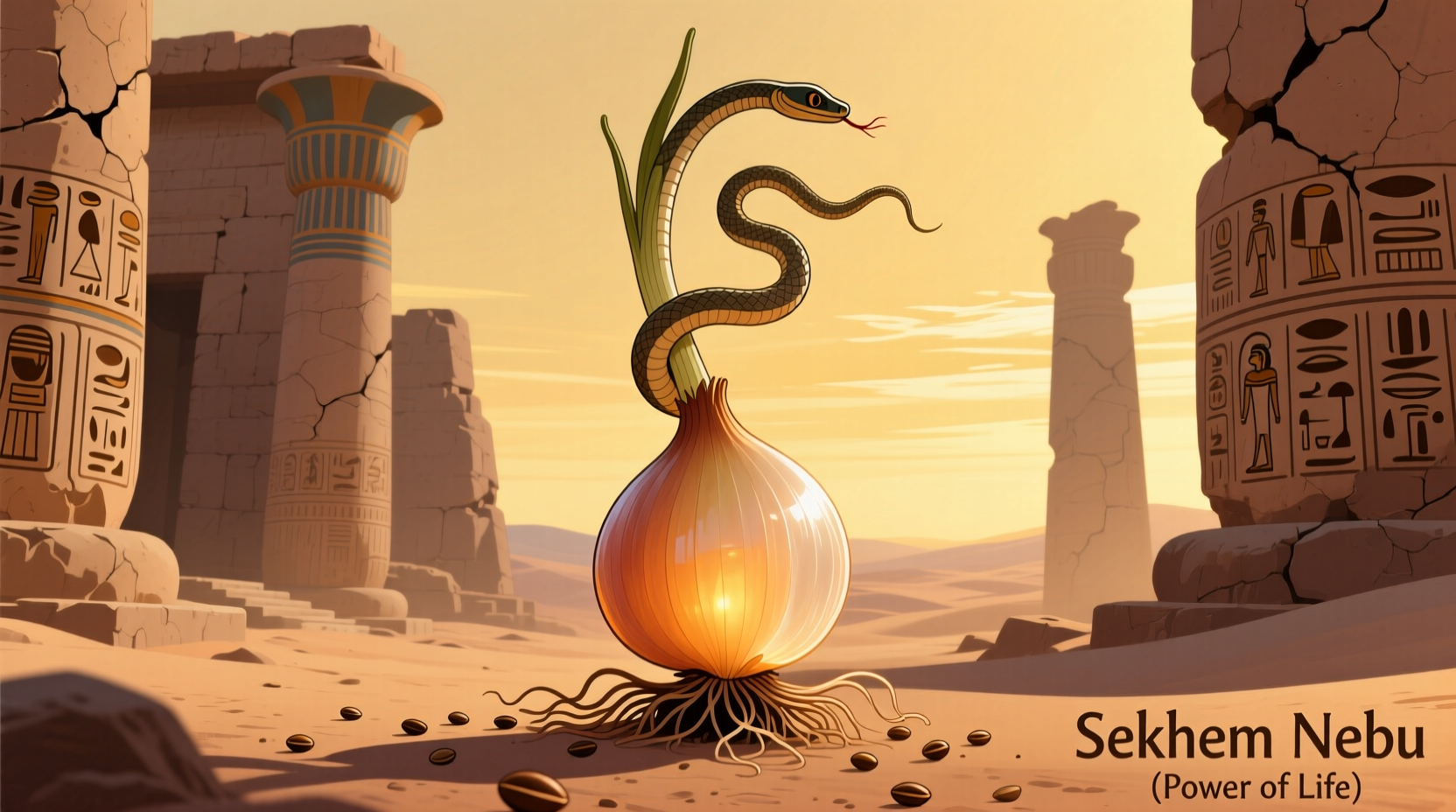What Exactly Are Egyptian Walking Onions?
Egyptian walking onions (Allium proliferum), also known as topset onions, tree onions, or walking onions, aren't actually Egyptian nor do they truly "walk." This perennial allium variety produces small bulbils at the top of its stalk instead of flowers. As these bulbils grow heavier, the stalk bends toward the ground, allowing the new bulbs to take root where they touch soil—creating the appearance of "walking" across your garden bed.
While commonly grown from divisions, starting Egyptian walking onions from seeds offers genetic diversity and helps preserve heirloom varieties. The seeds produce plants identical to the parent plant, maintaining the unique characteristics that make this allium so valuable for sustainable gardening.
Historical Journey of This Unique Allium
Despite their misleading name, Egyptian walking onions likely originated in Central Asia. Historical records show these hardy alliums were cultivated across Europe by the 1700s before making their way to North America with early settlers. The "Egyptian" misnomer probably stems from Victorian-era plant cataloguers who labeled unusual plants with exotic origins.
| Historical Period | Development | Documentation Source |
|---|---|---|
| Pre-1700s | Originated in Central Asia | USDA Agricultural Research Service |
| 1700-1800s | Spread across European gardens | Royal Horticultural Society archives |
| Early 1800s | Documented in American seed catalogs | Smithsonian National Museum of American History |
| Modern Era | Recognized as heirloom perennial vegetable | Seed Savers Exchange records |
Why Gardeners Choose Egyptian Walking Onion Seeds
Gardeners increasingly turn to Egyptian walking onions for compelling reasons that standard bulb onions can't match:
- Perennial production - Once established, they return year after year without replanting
- Dual harvest - Enjoy both green scallions and small underground bulbs
- Cold hardiness - Survive temperatures down to -30°F (-34°C)
- Pest resistance - Naturally repel many common garden pests
- Low maintenance - Require minimal watering and no fertilization

Planting Egyptian Walking Onion Seeds: Step-by-Step
While most gardeners propagate walking onions through division, starting from seeds preserves genetic diversity and helps maintain heirloom strains. Here's how to successfully grow them from seed:
Timing Your Planting
For best results with Egyptian walking onion seeds, consider your climate:
- Cold climates (zones 3-5): Start seeds indoors 8-10 weeks before last frost
- Moderate climates (zones 6-7): Direct sow in early spring or fall
- Warm climates (zones 8-9): Plant in fall for winter harvest
Sowing Egyptian Walking Onion Seeds
Follow these steps for optimal germination:
- Fill seed trays with moist, well-draining potting mix
- Sow seeds ¼ inch deep, spacing 1 inch apart
- Maintain consistent moisture (not soggy) during germination
- Provide 60-70°F (15-21°C) temperatures for best results
- Expect germination in 7-14 days
- Transplant seedlings when they reach 3-4 inches tall
Growing Conditions for Success
Egyptian walking onions thrive under specific conditions that differ from standard onions:
Soil Requirements
These hardy alliums tolerate a wide range of soil types but prefer:
- Well-draining loam with moderate fertility
- pH between 6.0-7.5
- Minimal organic matter (unlike most vegetables)
Unlike standard onions that require rich soil, Egyptian walking onions actually perform better in moderately poor soil conditions. Excessive fertility can lead to excessive leaf growth at the expense of bulb development.
Watering Needs
Once established, these perennial onions demonstrate remarkable drought tolerance. During the first growing season:
- Water seedlings regularly to maintain consistent moisture
- Reduce watering frequency as plants mature
- Mature plants need watering only during extended dry periods
Harvesting Your Egyptian Walking Onions
One of the greatest advantages of growing Egyptian walking onions from seed is the extended harvest window they provide:
- Green onions: Harvest at any time by cutting leaves 2 inches above soil line
- Underground bulbs: Dig in late summer when tops begin to yellow
- Topsets (bulbils): Harvest when they become heavy enough to bend stalks
Unlike standard onions that require annual replanting, Egyptian walking onions provide continuous harvests. The underground bulbs remain small (about the size of a shallot), while the topsets range from marble to golf ball size.
Common Challenges and Solutions
While remarkably resilient, Egyptian walking onions face some challenges:
Understanding Growth Limitations
These unique alliums have specific boundaries that affect their performance:
- Climate limitations: Struggle in zones 10+ where winter chill requirements aren't met
- Space requirements: Need room to "walk" (minimum 12-inch spacing)
- Competition issues: Don't thrive near aggressive spreaders like mint
- Harvest timing: Topsets must be harvested before they root in new locations
According to Cornell University's gardening resources, Egyptian walking onions perform best when given their own dedicated bed rather than mixed with other vegetables. Their unique growth habit requires space to develop properly without competition.
Making the Most of Your Harvest
Egyptian walking onions offer culinary versatility beyond standard onions:
- Use green tops fresh in salads and as garnish
- Pickle the small underground bulbs for gourmet condiments
- Roast topsets like pearl onions for elegant side dishes
- Freeze chopped greens for year-round use
- Store underground bulbs in cool, dry conditions like shallots
The flavor profile differs from standard onions—milder than bulb onions but stronger than chives—making them ideal for dishes where you want onion flavor without overwhelming pungency.
Frequently Asked Questions
Can Egyptian walking onions be grown in containers?
Yes, but with limitations. Use containers at least 12 inches deep and wide. Container-grown plants won't "walk" but will still produce topsets. Expect smaller bulbs and more frequent watering needs compared to garden-grown plants. Repot every 2-3 years to prevent overcrowding.
How long does it take for Egyptian walking onion seeds to produce harvestable plants?
Plants grown from seed typically reach harvestable size in 90-120 days. However, they won't produce significant topsets until their second growing season. For immediate harvests, many gardeners start with divisions while growing plants from seed for future propagation.
Are Egyptian walking onions actually related to Egyptian culture or agriculture?
No, this is a historical misnomer. Despite the name, Egyptian walking onions have no documented connection to Egypt. The name likely originated in Victorian-era seed catalogs that assigned exotic names to unusual plants. These alliums probably originated in Central Asia and spread through Europe before reaching North America.
Do Egyptian walking onions require special winter care?
No special winter care is needed in zones 3-9. The plants naturally die back in winter and regrow in spring. In extremely cold regions (zone 3), a light mulch can protect against heaving from freeze-thaw cycles. Avoid heavy mulching which can promote rot in moist winter conditions.











 浙公网安备
33010002000092号
浙公网安备
33010002000092号 浙B2-20120091-4
浙B2-20120091-4